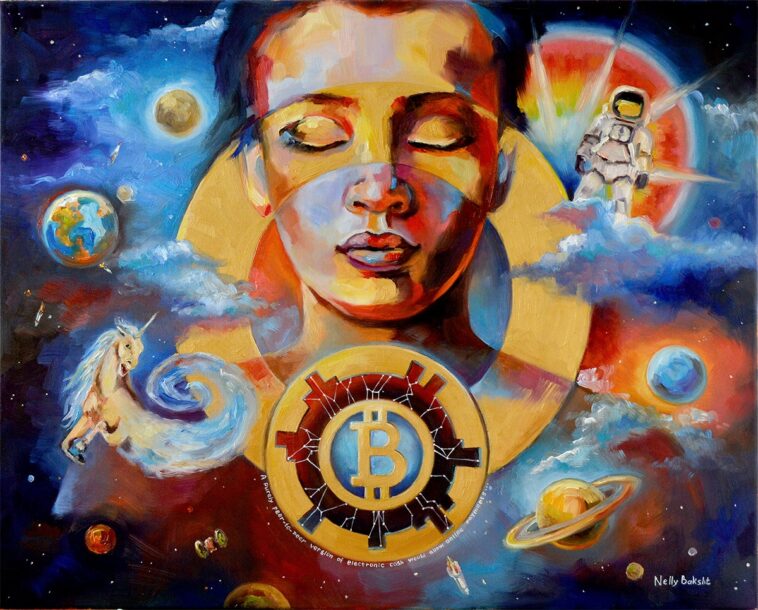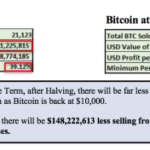This is a sponsored post. Learn how to reach our audience here.
This article is not a direct offer, recommendation, or endorsement of any products, services, or companies mentioned. Blockgeeks.com does not provide investment, tax, legal, or accounting advice. Crypto is risky, do your own research, invest safe.
Non-fungible tokens have seen a tremendous amount of adoption and value increase since late 2020, mainly due to promotion by popular artists. An industry that was left untapped is now completely redesigning the world as we know it, increasing the use cases of cryptocurrency in a decentralized future.
While many people still struggle to understand and buy bitcoin, others are already spending millions of dollars for .jpeg images in hopes of future price appreciation. Are they mad, or is this industry completely gonna change the world as we know it? For many futurists and innovators, the latest seems inevitable. NFTs are already part of many industries, revolutionizing them faster than crypto did over the past 10 years.
And this is why we wrote this article. In the next few chapters, we delve into the 5 industries that we can expect to see lots of NFT action occurring in the short term future. After reading this post, you will know how to position yourself to increase your odds of investing success.
Art Industry
Since collectibles were the very first application of NFTs in 2017 (Cryptokitties), it is only normal that we now see massive adoption by artists of all backgrounds. This is especially true for paintings and digital art. Many traditional artists have finally found an audience that is willing to invest in unique digital pieces of their art, not only because they find the work aesthetically pleasing, but also because they believe that it has potential for growth in the future.
Artists like Fewocious, Trevor Jones, Ekaitza, Beeple, and more, have become celebrities in the art scene, with many finding it impossible to comprehend how these seemingly valueless pieces are going for tens of millions.
Speaking of art, music should also be considered. Several artists are already wrapping their singles in NFTs to offer users the potential of owning the song and being the only ones to do so. Mike Shinoda of the popular band Linkin Park recently sold one of his songs for more than $30.000, showing the world just how real demand for NFTs really is.
Luxury Industry
Supply chain management is another sector where NFTs will become increasingly important. Currently, we are seeing massive markets for fake products that are sold for only a fraction of their retail price. This damages luxury brands and taints their reputation among buyers.
While certain blockchain projects like VeChain and Omisego are already trying to put luxury item authentication services on the blockchain, NFTs seem to be the better, more efficient, and more effortless solution to solve this problem. When users buy an original item, they could simply receive an NFT as well, claiming the authentication of the product in case it is to be resold in the future.
Entertainment Industry
The entertainment sector is probably the industry that holds the most possibilities in the future, as it is set to streamline a multitude of processes in due time. NFTs can be sold as tickets to events, access passes to certain venues and even experiences that we can speak only vaguely off.
The ability to turn NFTs into experiential products will label the next few years, as more and more people will move away from traditional products and move towards community-run productized experiences that can be authenticated and showcased through non-fungible tokens. After all, status plays an important role for every generation, and NFTs help younger generations take this to the blockchain level.
Real estate industry
While cryptocurrency prices have certainly made many people explore real estate investing, not many are aware of the Metaverse. Digital worlds are created in front of our very eyes, with digital land being sold on NFT platforms like OpenSea, Rarible, and others.
Digital land, or virtual real estate, is simply a location within a virtual world that attracts the attention of that world’s users, who all join the space to collaborate, create, and socialize. Platforms like Decentraland, CryptoVoxels, and the Sandbox seem to be the three most popular virtual worlds, and land in key positions is sold for hundreds of thousands of dollars at the time of this writing. This, of course, is only possible due to proof of ownership, as land cannot be copied or seized on a decentralized, shared platform.
Advertising
Finally, advertising is also an industry that NFTs are actively disrupting. More specifically, marketing. Large influencers and sports teams are leveraging their audience to build NFTs, which expose their brand to a new audience, namely the tech “nerds” and Bitcoiners. And while many may find this rather funny, the truth is that it’s working really well.
Take NBA Topshots as an example. The organization is selling basketball highlights for incredible amounts of money, bringing attention to their brand, through the lens of investing. This exposes the sport to new audiences and further merges the traditional sports world with the future of blockchain-based collectibles.
The post 5 Sectors Where NFTs are Increasing in Popularity appeared first on Blockgeeks.





 BTC-USD
BTC-USD  ETH-USD
ETH-USD  LTC-USD
LTC-USD  XRP-USD
XRP-USD